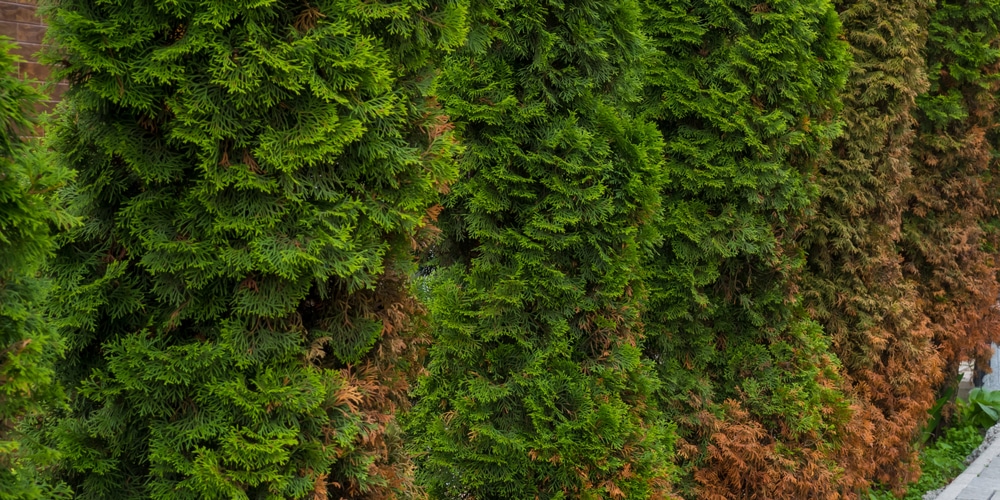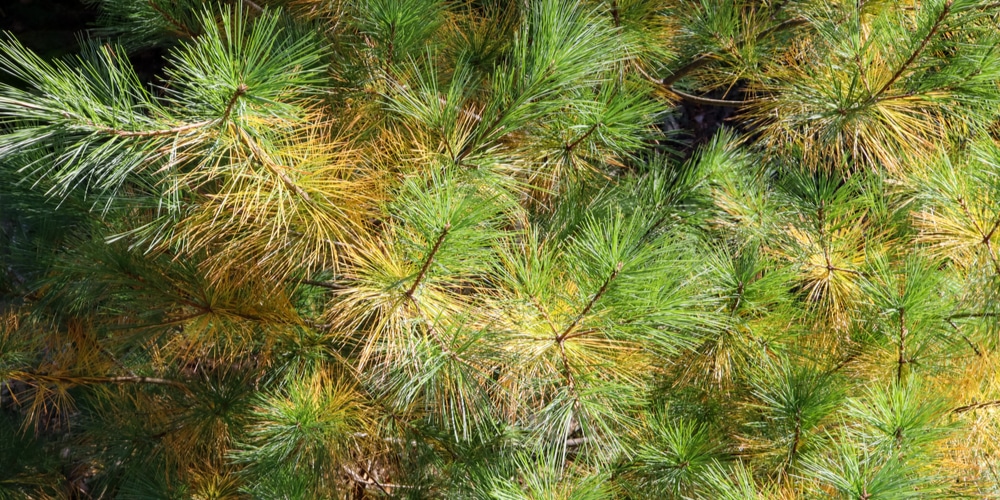No one wishes to see a plant they have invested so much time and resources in to beautify their home appear less vibrant, weak, and unhealthy. For arborvitae gardeners, seeing their precious trees turn brown is quite frustrating. That’s why any gardener would do anything possible and save the arborvitae trees from turning brown.
Generally, it is not hard to protect your trees from drying. However, you need to identify why they turn brown before you can save them. Typically, arborvitae will turn brown in both winter and summer. The causes of winter browning and summer browning may not be the same, and their remedies may vary. However, some can help solve the problem, whether it is in winter or summer.
The main reason the evergreen arborvitae’s foliage turns brown is the lack of adequate water. Worse, when the leaves and branches of arborvitae start changing their color, the plant loses its beauty, making your home also appear dryer and unattractive. That is why gardeners will seek to know why the trees dry up and any remedies.
Why do arborvitae trees dry up in summer?

For summer arborvitae browning, the main causes are drought and hot scorching sun rays. When there is drought, the soil lacks adequate water that plants can suck through the roots to the leaves. Since leaves are not receiving water, they start to turn brown and dry up.
Similarly, when the sun’s rays are too hot, the transpiration rate is also high. If the soil does not have adequate water to cover up for the water lost through leaves, the leaves start to brown and eventually die.
Injured roots are another reason why plants dry up. Whether the roots are injured by digging, harmed by animals, or rototilling, the amount of water they use to supply will reduce. When the roots of arborvitae trees get injured, they may dry up, and the tree leaves will lack water because the roots no longer supply water and food to the leaves.
There are some pest and fungal diseases that affect arborvitae trees, causing them to change their color from green to either brown or yellow.
Arborvitae shrubs are also generally fond of seasonal thinning. This is whereby leaves naturally turn brown, dry up, and fall to the ground.
Overwatering and underwatering in summer could also be a cause of browning in arborvitae trees. When trees receive too much water, the leaves react by decolorizing. This is ultimately the same as when they receive too little water supply.
How to save brown arborvitae from summer
Saving brown arborvitae from summer may be challenging and easy if you are a cautious gardener. Here are a few remedies to drying arborvitae.
1. Mulching
Undoubtedly, mulching is the simplest strategy to keep plants well moist, established, and healthy for a long time. Mulching at the foot of an arborvitae tree helps preserve soil moisture, improve the soil structure and lower the chances of root damage by lawnmowers, animals, or digging.
2. Water as needed
On average, a mature arborvitae tree grown in fertile soils requires about an inch of water every week, while the young trees require more water to help reduce transplant shock. Watering constantly helps reduce the chances of leaf browning and encourages more branches and leaves to sprout.
When they do get the proper amount of water, an arborvitae grows fast.
3. Apply fungicides
As said earlier, fungal infections on arborvitae trees cause browning; therefore, applying fungicides at regular intervals will reduce the chances of fungal infections and kill the preexisting fungi on the tree. Use copper-based pesticides in late fall and springtime to help control pest and fungal infections on the tree.
4. Remove the affected branches
After identifying the cause of browning on your trees and applying the available remedy, you need to prune out the affected leaves and branches to remain with only the green, healthy branches. Pruning the affected parts also helps control the spread of the brownness, especially if pests or fungal infections cause it.
5. Plant roots to the correct length
If you are transplanting the trees, make sure you plant the roots to the appropriate depth so that they can suck adequate water from the soil to the leaves. With appropriate root depth, the water getting to the leaves will be adequate, and you may need little to no irrigation.
How To Save Brown Arborvitae Trees In Summer: Conclusion
Browning of arborvitae trees can be termed as a natural seasonal occurrence, but truthfully, not every time will it be drying naturally. During summer, drying may be due to drought or fungal infections. Hopefully, this article will help you if you are seeking to save your arborvitae trees from summer browning.
Related Article: Arborvitae Turning Brown: What Causes the Condition?
